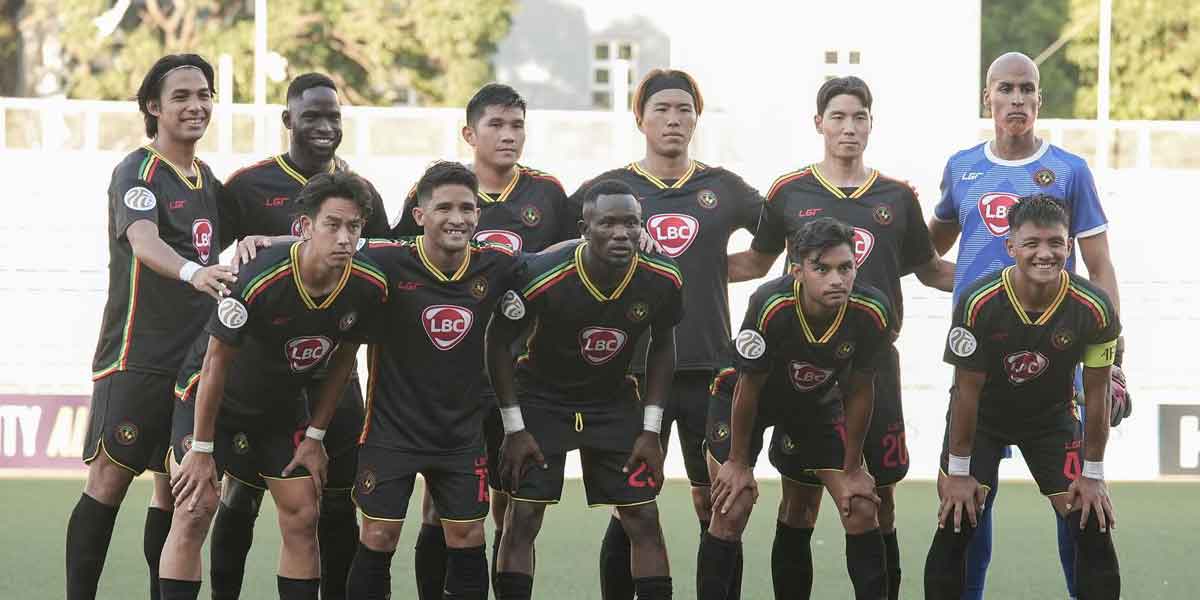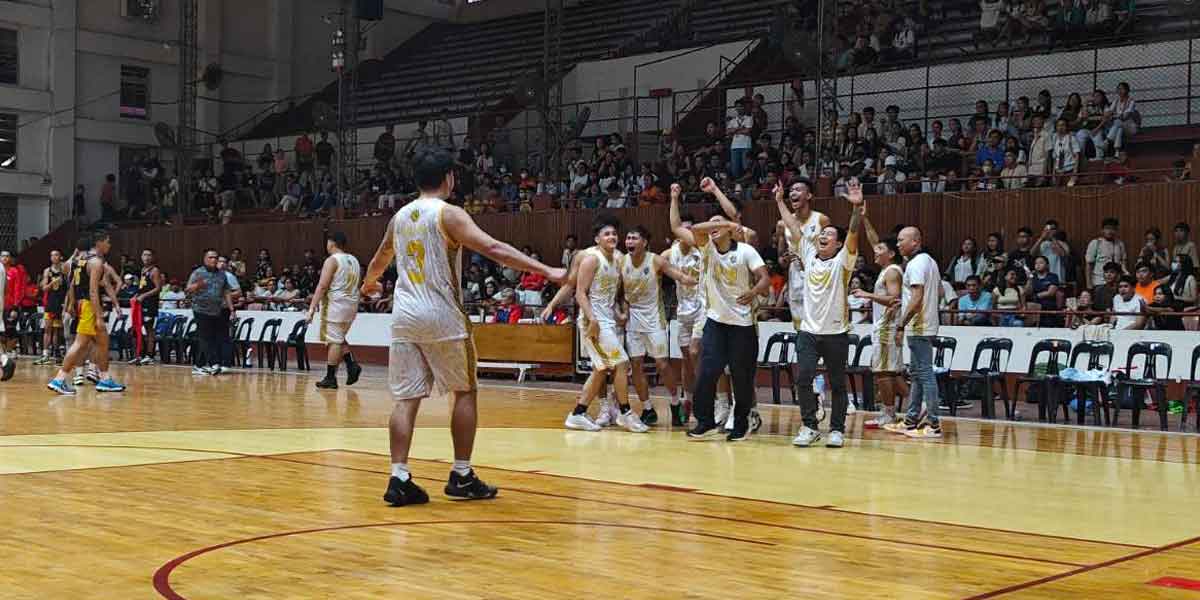by Hans Ethan Carbonilla
An 18-year-old girl bravely said goodbye to her hometown in Cebu and traveled to the uncertainties of Metro Manila, in hopes of finding her luck in the entertainment industry, Aiah Arceta’s luggage was just full of dreams, determination, and her pageant heels.
It was not part of the plan, but while gracefully strutting the ramp of her dreams, she stumbled upon a rare opportunity of becoming a P-Pop trainee. However, as she arrived at the Star Hunt Academy, she had to triple her efforts – most especially she confessed that she was no singer, dancer, nor a performer.
While Arceta was still undergoing rigorous training in 2019, two active P-Pop groups, MNL48 and SB19, were already making a mark in the music scene as pioneers. Over the years, the P-Pop community has shown potential of making it big out there, trailblazed by them.
Driven by the P-Pop rise movement, more and more groups from different known media companies debuted during the pandemic. But a lot of Filipinos are still skeptical about P-Pop, posing questions about its authenticity and originality as the new generation takes its pattern from K-Pop.
Mabuhay, P-Pop
In the country, celebrities do not train before debuting. The stardom journey begins directly after a stint on a reality television show and is straightly pushed into the spotlight without proper training.
For the past years, media companies, ABS-CBN and VIVA for instance, have taken an attempt of creating their own groups, but obviously failed to capture Filipinos’ hearts who have K-Pop standards.
But this is not the case anymore with Arceta. Within two years of staying in Star Hunt Academy, the idol training ground of ABS-CBN formed in 2019, she was able to transform herself – from a pageant hopeful who does not know how to sing and dance into someone who is always ready to rock the stage.
All because of her everyday training and the sacrifices she made from the esteemed mix of Filipino and Korean coaches (MU Doctor, an established K-Pop training institution in South Korea) for years.
According to Mylene Quintana-Mallari, head of Star Hunt Academy, experimenting with K-Pop strategies was a risk and a very big investment in terms of time, money, and effort.
Just like the K-Pop format, Arceta underwent a rigid audition process and bootcamps before getting housed under one roof that is supported and financed by the head management. Other trainees also went to school remotely while balancing their lessons in dancing, singing, styling and even personality development!
Unfortunately, like most idol training programs, there were also trainees who failed monthly evaluations and were sent home, one by one.
“Primarily, it was really the training and the discipline of K-Pop that we wanted,” Mallari said in her interview with VICE Asia. “That’s why we also had to enlist Korean trainers to be on board, because we really wanted to learn how they do it.”
In the academy, they incorporated strict schedules and precise protocols, long training periods and self-practice. But Mallari also highlighted that as much as they wanted to follow K-Pop’s training format, they have also consciously avoided the more toxic elements of the K-Pop training system – strict diets and deteriorating mental health – that is why the academy always gives the trainees a healthy break once in a while.
Vixen as she is, Arceta believed she could make it – and after two years of diligent training, voila! From a soon-to-be-Miss Philippines now redirected her path to become the main visual and main rapper of an eight-member P-Pop girl group, BINI.
This proves that upending the old model was a smart move as BINI has already reaped awards and garnered global fans in less than a year since debut.
But this has cost them critics: where does P-Pop belong?
K-pop but in Filipino?
Arceta’s group pre-debuted with an electro-pop remake of Ryan Cayayab’s classic, Da Coconut Nut. This “P-Pop-fied” novelty song with synchronized choreography and addictive beats they learned for months, stirred buzzes in social media and instantly accumulated a swarm of support from Filipino fans.
However, doubters are always present and still do not acknowledge the existence of performing groups as part of an evolution of the Original Pinoy Music (OPM).
Tracing the history of OPM, were Filipino pop acts in the past who succeeded their musical career out of singing and dancing their songs. One of them was Smokey Mountain, who originally sang Da Coconut Nut. But these acts were only few and far between.
For Jonathan Manalo, Creative Director of ABS-CBN Music and one of 2020’s recipients of National Commission for Culture and the Arts who has worked with BINI, OPM is the by-product of varied influences from colonialism to modern day.
“Huwag natin ikahon sa iisang style lang ang OPM…may R&B, may rock, may ballad, as long as ginawa ng Filipino, OPM ‘yan,” he justified. Hence, forwarding OPM to a more dynamic genre, there goes P-Pop which continues to blend to the contemporary flavors the masses love to consume.
This was evident when Arceta, together with her group, performed Da Coconut Nut live in a noontime variety show and became the hottest trending topic in social media for days. They were even called as the “coconut girls!”
Manalo further discussed that because Filipinos are highly talented at making versions of what is considered as “pop,” the country’s music scene was able to embrace the prevailing pop sound, and that happens to be K-Pop due to the so-called Hallyu wave.
“Gumawa tayo ng sarili nating version ng pop music not para gayahin ang K-Pop,” he further shared. “Pero dahil naga-gravitate tayo sa nagiging flow ng pop music sa world which is the sound of K-Pop, ‘yon yung lumalabas – especially sa mga new generation of artists who are exposed to the prevailing pop sound.”
The new generation of artists are also the budding OPM songwriters who shared their expertise on writing BINI’s original songs – Kapit Lang’s words and music were made by Lian Kyla, while that of Golden Arrow were created by Sabine Cerrado. Arceta, being the main rapper herself, was even part of the creative process by writing her rap verses!
Prior to the current era of K-Pop influence, is the same concept when the global pop sound back then was that of the Western. Famous American band, Hanson, had a counterpart in the Philippines with the boy group named JCS – John Prats, Carlo Aquino, and Stefano Mori. They also had Streetboys who were focusing mainly on hip-hop, and who would not know any Sexbomb songs?
But the significant difference from the past is that today’s performing groups have solid plans, programs, and visions – they are made to last long.
This solidifies that OPM or any other genre is never static. It is not locked to one musical style as it never pauses to adapt through the demands of changing times – which gives birth to P-Pop. K-Pop is not original either for it takes its origin from J-Pop…and following that, the P-Pop industry is chasing fame the K-Pop way.
So, where does P-Pop belong? Even though a portion of P-Pop falls among the waves of K-Pop’s influence, it is also something Filipinos can take pride in and can call their own as P-Pop takes its root from OPM and as it revamps the local pop music scene into a universal visual language. Debating between where it belongs caged P-Pop into an isolated genre. Limiting, as it can operate in various spaces.
The Distinguishing Factor
It was never a cakewalk to debut as one idol group, most especially not within the global pandemic. But with BINI’s tenacity armed with dreams, not even a pandemic nor a denial of franchise can stop them to be next the global filomenon.
Their debut album released on October 17, 2021, was a culmination of their sacrifices for the past two years of holistic idol training…and a lot more years to unfold.
If there was a word to describe how she felt during the release, Arceta expressed that she was “proud” for being able to come up with an album that showcases different sides of being a Filipino youth – fierce, youthful, and inspirational.
Not hearing BINI’s debut album, a decade K-Pop fan, Franz Jackist Eya is one of those people who currently sees no line between both genres as she has a prejudice that P-Pop and K-Pop share the same identity.
But Manalo said that what sets P-Pop apart from its counterpart is that it does not sound and look “manufactured.” P-Pop’s rawness and relatability hold their own solid grounds. This can be traced back to the two of the main characteristics of OPM that appealed to the masses – which are relatability and sentimentality. These attributes are what he considered as the common grounds between usual OPM songs and P-Pop – as the contemporary pop music originated from it.
“Ang P-Pop hindi siya cold pop,” he expressed. As he examined the growing community, he assessed that it always has a Filipino warmth injected into their craft, and in his words, “Pinoy na Pinoy pa rin.”
Here are some of the original P-Pop songs that belong into the premise:
- MAPA – SB19
- Kundiman – BGYO
- Na Na Na – BINI
- Sa Panaginip Na Lang – ALAMAT
- S. – VXON
Here are other distinguishing factors of P-Pop:
- Cultural aspect. BINI’s sibling group, BGYO has music videos (The Baddest, The Light, Kundiman) that have historical representations embedded in them; VIVA’s ALAMAT sings in their respective regional languages and wears cultural fabrics. Arceta even had a Bisaya rap part during their grand launch.
- OPM remakes. BINI revives old OPM songs as if they were new. Just like how they did with Da Coconut Nut, they incorporated hard-hitting and danceable beats along with their synchronized choreographies to Sarah Geronimo and Gary Valenciano’s classics.
- Filipino production. From training to songwriting to producing quality music videos, BINI’s production team just like other P-Pop groups are all Filipinos!
- For P-Pop fans, they do not see Filipino idols as unattainable celebrities as compared to K-Pop. Majority of them see these idols as aspirational figures because they resonate well with the stories they tell and Filipino values they hold. Christian Lachica, a BGYO and BINI fan said that he could see himself from them.
While P-Pop takes its influence from K-Pop, slowly and surely, it is carving its own path to a more authentic Filipino representation in the global pop scene. For instance, BINI’s presence is not just felt among the Asian neighbors, but they are also making waves in the Americas when they kicked-off their Global Virtual Tour last year, and when they had their first live international stage in Dubai, UAE.
Their strong will to grow as P-Pop idols and in Arceta’s words “brave and courageous,” is an embodiment of what they truly want to transpire.
Manalo then concluded that P-Pop is not a niche genre anymore and that in the next two to three years, it will reach its golden era.
Recently, a P-Pop Convention was held in Araneta Coliseum which convened today’s rising P-Pop groups. After hearing the roaring cheers of the fans, Manalo, who was there, proudly said that “P-Pop is really rising.”
The soulful sigh of back then Star Hunt Academy trainee, Aiah Arceta who left her hometown at 18, became a joyous exclamation. Now 21, Arceta’s blood, sweat, and tears led her to performing in front of a huge crowd as a premier member of ABS-CBN’s main girl group and nation’s girl group, BINI.
###
Hans Ethan Carbonilla is a third year Communication and Media Studies (Journalism Cluster) student of the University of the Philippines Visayas. His story is a CMS 136 (Specialized Reporting) class output under Dr. Zoilo S. Andrada Jr.


























